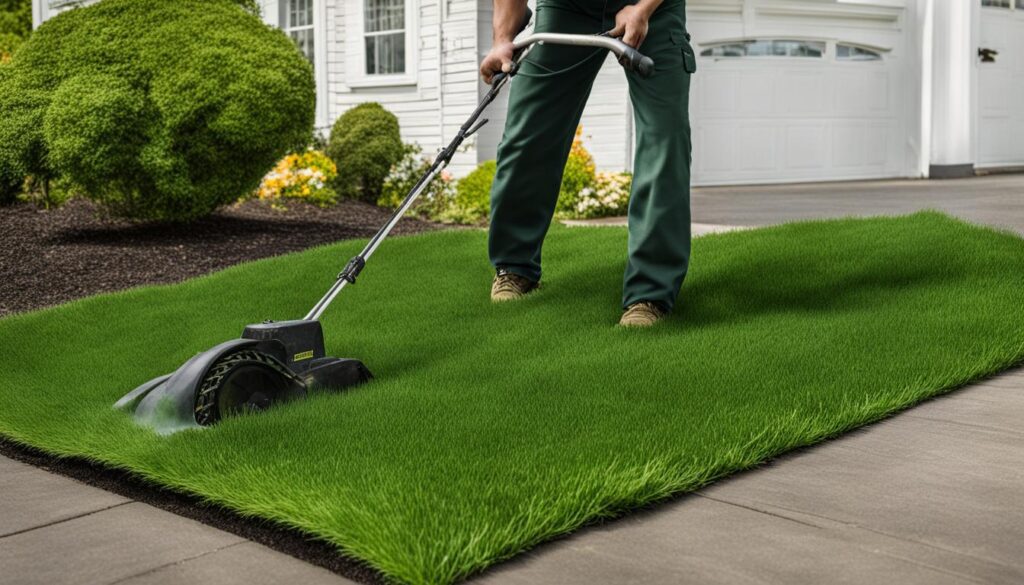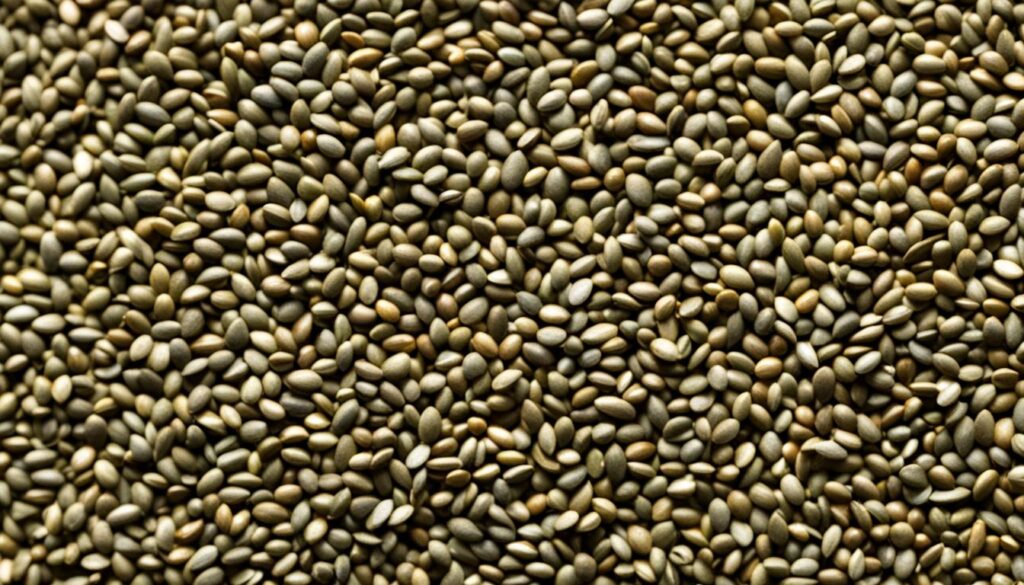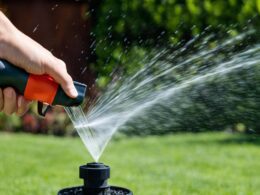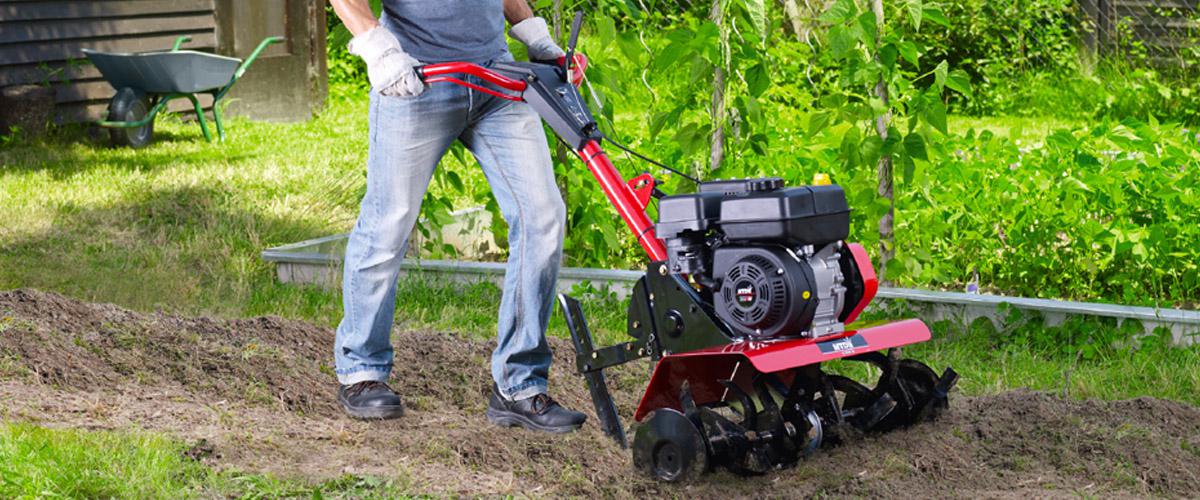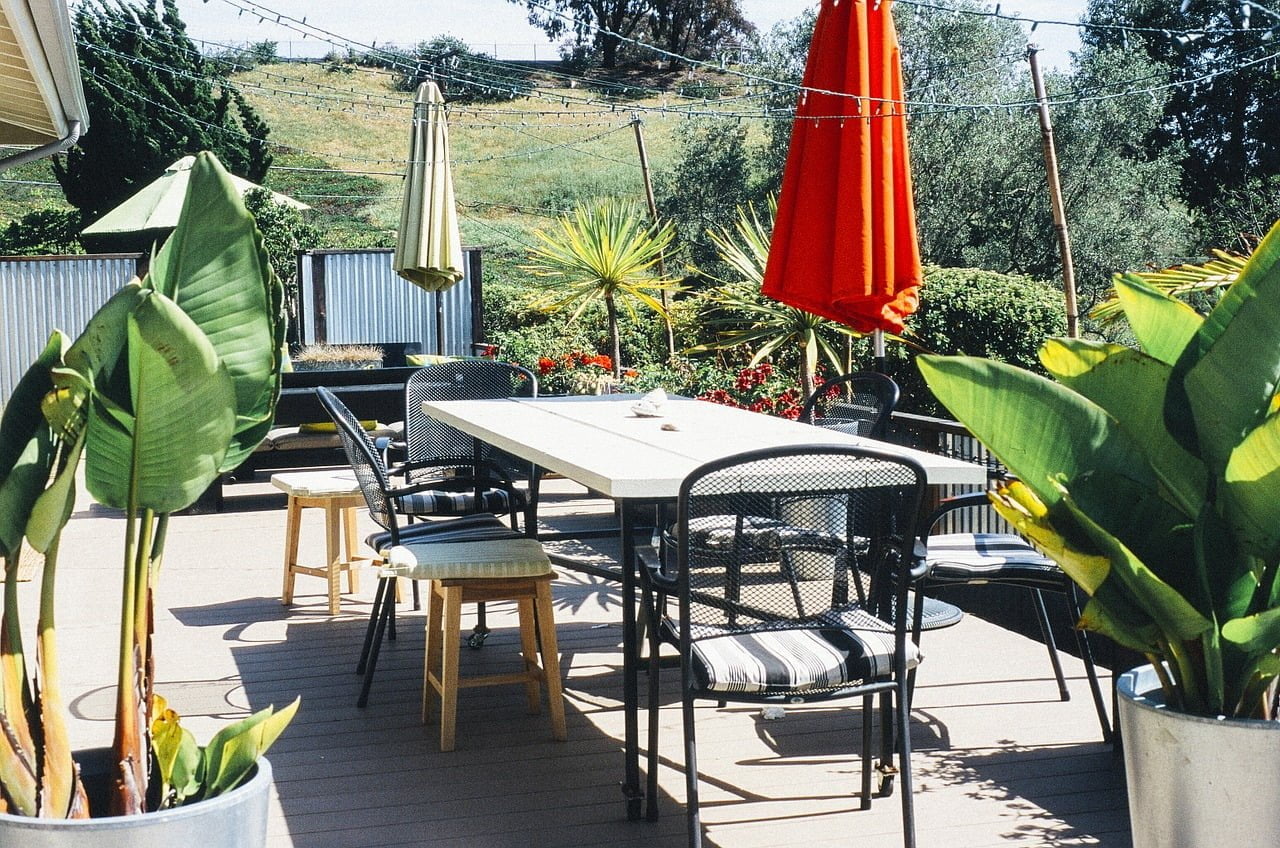Overseeding in spring is an essential technique for achieving a beautiful, full, and lush green lawn. By adding new grass seed to your existing turf, you can enhance the density and vibrancy of your lawn. This process can help to fill in bare spots, improve turf density, and rejuvenate worn-out or aging lawns.
Some common reasons for the need to overseed include depleted soil conditions, compaction and erosion, poor water drainage, insufficient water and fertility, inadequate sunlight, poor air circulation, excessive thatch, unsuitable grass varieties, and overall neglect of lawn care.
To achieve a successful overseeding process, it is important to follow specific steps, such as mowing the grass low, selecting high-quality grass seed, correcting any existing problems in the soil, spreading the seed evenly, and providing consistent care, including feeding, watering, and nurturing the seedlings.
Key Takeaways:
- Overseeding in spring promotes a lush and green lawn.
- Adding new grass seed enhances turf density and vibrancy.
- Common reasons for overseeding include soil depletion and neglect of lawn care.
- Follow steps such as mowing low, selecting quality seed, and correcting existing problems.
- Consistent care with feeding, watering, and nurturing is essential for successful overseeding.
By implementing these overseeding techniques, you can unlock the full potential of your lawn and enjoy a lush and healthy oasis. Follow the upcoming sections for detailed steps and tips to achieve a vibrant and resilient lawn that will be the envy of your neighborhood.
Step 1: Mow Grass Low
Before overseeding your lawn, it is important to mow the grass low. Cutting the grass shorter than usual helps to remove any dried or dead grass, twigs, leaves, and debris. Bagging up the clippings and raking the lawn will further remove these materials and create a clean surface for overseeding.
Additionally, mowing the grass low allows for easier seed-to-soil contact, ensuring better germination and root growth. It is recommended to mow the grass low with the use of a mower and then rake the lawn to remove debris and loosen the top layer of soil.
By mowing the grass low, you create an ideal environment for overseeding. Removing dead grass and debris allows the new seed to make direct contact with the soil, promoting strong root development. Raking the lawn after mowing further prepares the surface for successful overseeding.
Step 2: Select Top Quality Grass Seed
Choosing the right grass seed is crucial for successful overseeding. It is important to select a variety of grass seed that is compatible with the existing grass on your lawn. If your lawn contains cool-season grass varieties, choose new seed that will add denser coverage to areas with sparse growth.
Modern products often combine grass seed with soil enhancers and fertilizers, making it easier to apply to your lawn with the use of a spreader. If you have warm-season grass, consult with a gardening expert to determine the best grass type for your specific location and climate.
Applying high-quality grass seed will help ensure optimal germination and the growth of thick, healthy grass.
Choosing Compatible Grass Seed
When selecting grass seed for overseeding, it’s important to consider compatibility with your existing lawn. Look for varieties that blend well with the grass you already have. This ensures a consistent appearance and uniform growth throughout your lawn.
The Benefits of Modern Grass Seed Products
Modern grass seed products offer enhanced convenience and effectiveness in overseeding. Many of these products are formulated with soil enhancers and fertilizers, providing a well-rounded approach to lawn care. They can be easily applied using a spreader, ensuring even distribution of seed and nutrients.
Consult with Experts for Warm-Season Grass
If your lawn consists of warm-season grass, seeking advice from gardening experts or professionals can help you determine the most suitable grass type for your specific location and climate conditions. Their expertise will ensure that you select the appropriate grass seed and achieve optimal results.
Step 3: Correct Existing Problems
Before overseeding your lawn, it is important to address any existing problems in the soil and lawn. If your lawn has thinning issues or bare spots, consult with a local gardening center to determine any necessary soil amendments. You may need to dethatch or aerate areas of your lawn that show signs of compaction. These processes will allow for better moisture penetration and seed germination. It is also recommended to add a thin layer of enriched soil across the existing grass to improve the growth of new grass. By correcting existing problems before overseeding, you can create optimal conditions for successful grass growth.
Correcting existing lawn problems is a crucial step in preparing your lawn for overseeding. Thinning or bare spots on your lawn can signify underlying issues that need to be addressed before introducing new grass seed. Consulting with a local gardening center can provide valuable insights and recommendations specific to your region and soil type.
Thatching and aerating areas with compacted soil will help improve water absorption and ensure proper seed germination. Thatch is the layer of organic material that accumulates between the soil and grass blades, and excessive thatch can prevent water and nutrients from reaching the roots. Aeration involves creating small holes in the soil to alleviate compaction and improve airflow, promoting healthier root development.
Another technique to enhance overseeding success is to add a thin layer of enriched soil across your existing grass. This topdressing can improve the nutrient content and structure of the soil, creating a favorable environment for new grass growth. Ensure the enriched soil is spread evenly to avoid uneven germination and patchy areas.
By taking the time to correct existing problems in your lawn, you set the foundation for successful overseeding. Addressing thinning, bare spots, thatch, compaction, and soil quality ensures that the new grass seed has the best chance to thrive and create a lush, vibrant lawn.
Conclusion
Achieving a lush and green lawn is within reach with the practice of overseeding in spring. By diligently following the expert tips and techniques shared in this article, you can uncover the full potential of your lawn and enjoy its vibrancy. Overseeding not only helps fill in bare spots but also enhances turf density and rejuvenates worn-out or aging lawns.
Remember, the key to success lies in a well-executed lawn care plan. Start by mowing the grass low to create a clean surface for overseeding. Then, carefully select top-quality grass seed that is compatible with your existing lawn. Don’t forget to address any existing soil issues and provide consistent care, including proper feeding, watering, and nurturing of the seedlings.
By embracing overseeding techniques and actively managing your lawn, you can achieve a thick and healthy turf that exudes natural beauty and resilience. So, why wait? Begin your lawn care journey today and unlock the beauty of a lush and healthy lawn.
Can Leveling a Bumpy Lawn Impact Overseeding in Spring?
Leveling a bumpy lawn before overseeding in spring can greatly impact the success of the process. By creating a more even surface, it allows the new grass seeds to make better contact with the soil, leading to improved germination and overall better growth.
FAQ
What is overseeding?
Overseeding is the process of adding new grass seed to an existing lawn in order to improve its density and vibrancy.
Why is overseeding important?
Overseeding is important because it helps fill in bare spots, improve turf density, and rejuvenate worn-out or aging lawns.
When is the best time to overseed?
Spring is the best time to overseed because the soil is warm, which promotes optimal germination and growth of new grass.
How do I prepare my lawn for overseeding?
To prepare your lawn for overseeding, mow the grass low to remove debris, address any existing soil problems, and ensure even seed distribution.
How do I choose the right grass seed?
Choose grass seed that is compatible with the existing grass on your lawn and ensure it is of high quality for optimal germination and growth.
How do I correct existing problems before overseeding?
If your lawn has any thinning issues or bare spots, consult a gardening center for necessary soil amendments and consider dethatching or aerating areas with compaction.
How often should I water the newly overseeded lawn?
Water the newly overseeded lawn regularly, keeping the soil consistently moist until the new grass has established strong roots.
Can I fertilize my lawn after overseeding?
Yes, it is beneficial to fertilize your lawn after overseeding to provide essential nutrients for the new grass to grow healthy and strong.






